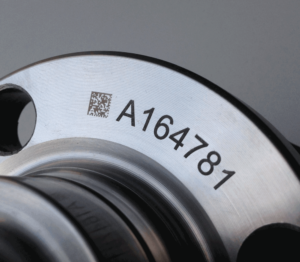Benefits of Choosing Fiber Laser

In the world of laser marking, precision and efficiency are key. Fiber lasers offer impressive performance for cutting, welding, and marking. They’re quickly becoming the go-to choice for industries aiming to up their game and cut down on downtime.
These lasers are not only durable but also deliver consistent performance, helping manufacturers lower maintenance costs and boost productivity. This makes fiber lasers a smart choice for staying competitive and achieving great results.
7 Key Benefits of Choosing Fiber Laser
Fiber lasers changed industrial processes with their cutting-edge technology, delivering precision and efficiency like never before. Picture a solution that combines exceptional performance with a compact, versatile design, all while keeping maintenance and costs to a minimum. These lasers have been a staple for decades, and here are seven reasons why:
- Precision and Beam Quality
- Energy Efficiency
- Versatility
- Compact Design
- High Output Power
- Reliability and Low Maintenance
- Cost-Effectiveness
1. Precision and Beam Quality
Fiber lasers are celebrated for their remarkable precision, making them ideal for tasks that require detailed and intricate cuts. The high beam quality of this particular laser allows for a finely focused spot, which results in sharp, clean edges with minimum material waste.
This ability to deliver consistent accuracy is particularly valuable in industries like aerospace and electronics, where every detail matters. With this type of laser, you can achieve these precise results while reducing the need for additional finishing work.
2. Energy Efficiency
One of the standout features of fiber lasers is their exceptional energy efficiency. They achieve this by converting a large portion of electrical power into laser light, which significantly reduces energy waste. As a result, businesses see lower operational costs and a decreased carbon footprint. Opting for a laser like this not only cuts down on energy expenses but also supports a more sustainable approach to manufacturing.
3. Versatility
Fiber lasers are ideal for marking a diverse array of materials, including metals like steel and aluminum, as well as non-metals like plastics and wood. Their precision and versatility make them the preferred choice for tasks that require detailed and durable marks.
In addition to marking, fiber lasers are also highly effective for cutting and welding, effortlessly handling everything from delicate designs to heavy-duty cuts, and they excel in engraving for more intricate work.
4. Compact Design
Featuring a smaller footprint than many other laser types, fiber lasers are known for their space-efficient design. This compact form factor allows them to fit easily into existing setups, even in facilities with limited space. Businesses benefit from this design as it not only conserves floor space but also simplifies integration into existing workflows.
By optimizing space usage, the laser contributes to a more streamlined and efficient operation, reducing the need for extensive modifications and improving overall productivity.
5. High Output Power
When tackling demanding tasks that need intense, focused energy, fiber lasers excel with their high output power. This feature allows for continuous operation at high power levels, delivering smooth, uninterrupted performance.
Advanced heat dissipation systems effectively manage heat, preventing overheating and maintaining stability during long periods of use. This makes fiber technology an excellent choice where dependable and consistent output is needed.
6. Reliability and Low Maintenance
One of the biggest advantages of laser systems using fiber optics is how reliable they are with minimal upkeep. Thanks to their enclosed optical path, these lasers are shielded from dust and other particles, so you don’t have to worry about frequent maintenance.
Plus, they perform consistently well, even in challenging conditions like extreme temperatures and vibrations. This reliability means you can count on them to keep running smoothly, giving you peace of mind and fewer hassles.
7. Cost-Effectiveness
Significant cost savings come with choosing fiber lasers, thanks to their high energy efficiency. These lasers consume less power and have lower maintenance needs compared to traditional models, leading to reduced operational expenses over time. Their solid-state design eliminates many costly consumables and minimizes the frequency of repairs.
For high-volume production settings, this efficiency translates into a quicker return on investment (ROI) by lowering per-part processing costs and enhancing overall profitability. This cost-effectiveness not only boosts the bottom line but also positions these lasers as a long-term investment in productivity and profitability.
Comparison with Other Lasers
When it comes to choosing a laser, understanding how fiber lasers compare to other types of lasers can make all the difference. They often shine with their excellent beam quality and efficiency, as mentioned above, standing out from other lasers.
By exploring how fiber technology measures up against these alternatives, you’ll see why they might be the better choice for tasks like cutting, engraving, and marking. Let’s takes take a look at three different lasers and compare:
- Vs. CO2
- Vs. Bulk
- Vs. Direct Diode
1. Vs. CO2
When it comes to cutting metals, fiber lasers come out in front against CO2 lasers. They work faster and more efficiently, making them perfect for precision metal cuts. Their high-intensity beam cuts through metal with speed and accuracy.
CO2 lasers, on the other hand, are fantastic for non-metal materials like wood, acrylic, and plastics. They handle these materials with ease, making them great for detailed designs and larger pieces. So, while lasers with fiber optics are the go-to for metal, CO2 lasers shine when working with non-metal materials.
2. Vs. Bulk
The beam quality and stability of fiber lasers makes them ideal for precision tasks like cutting and engraving. Their design, which includes fiber-optic cables and laser diodes, keeps the beam consistently focused and precise over long distances, maintaining high accuracy in detailed work.
Bulk lasers might be preferred in applications that demand high peak power in short bursts, such as certain medical procedures or specialized material processing. With their solid-state or gas mediums, bulk lasers can also be more cost-effective in environments where maintaining complex fiber systems is challenging.
3. Vs. Direct Diode
Direct diode lasers excel in cutting speed, particularly with reflective materials like copper and brass. Their ability to handle back-reflection effectively makes them ideal for tasks requiring speed and a clean finish, giving them an edge in scenarios where efficiency is important.
Meanwhile, fiber lasers are known for their exceptional beam quality, making them a top choice for precision work. Their mature technology and durable design also offer high reliability and low maintenance, making them a trusted option for projects where accuracy and consistency are key.
Getting the Most from Your Fiber Laser
Fiber lasers stand out for their precision, speed, and efficiency, making them a great choice for many different applications. They’re also low-maintenance and energy-efficient, which helps save on costs and reduce downtime. By choosing a fiber laser that matches your specific needs—like the materials you’ll be working with and the speed you require—you’ll not only boost your productivity but also set yourself up for long-term success.



